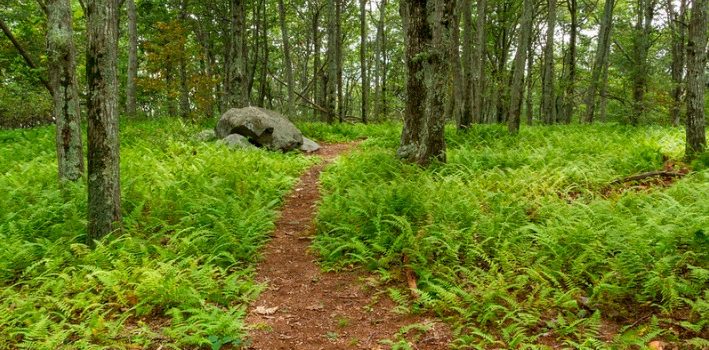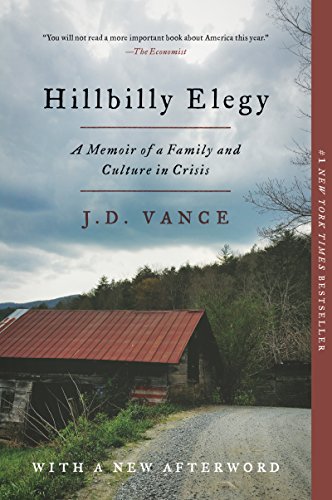

This article is an excerpt from the Shortform summary of "Hillbilly Elegy" by JD Vance. Shortform has the world's best summaries of books you should be reading.
Like this article? Sign up for a free trial here .
Is there a typical lifestyle of the Appalachian family? Are stereotypes about Appalachian families true?
As both a work of social commentary and an autobiography, Hillbilly Elegy takes us through Vance’s formative years in an Appalachian family, where he witnesses one social dysfunction after another. We’ll cover these attributes of the Appalachian family and what Vance’s family life indicates about other families in the area.
Vance’s Appalachian Family: An Autobiography of Crisis
Social dysfunctions in the Appalachian family include:
- Endemic poverty and high levels of unemployment.
- Widespread drug and alcohol addiction, chronicled most personally and painfully through Vance’s mother’s battles with substance abuse.
- Low levels of educational attainment (Vance himself is one of the few members of his extended family to attend college).
- Child abuse and domestic violence.
- Verbal abuse.
- Marital strife (vividly demonstrated by the five husbands Vance’s mother cycles through).
- Welfare dependency.
Vance shares the story of his struggles growing up within this culture as a means of articulating a broader social and cultural critique of the Appalachian white working class. Through it all, however, Vance is undeniably proud of where he comes from and clearly loves his Appalachian family very dearly.
He credits his maternal grandmother and grandfather (whom he calls Mamaw and Papaw) with saving him from the dysfunction of his nuclear family and instilling in him the attitudes and work ethic that empowered him to rise above.
Mamaw refused to allow young Vance to succumb to the “woe-is-me” mentality that haunted his community: she encouraged him to work hard, do well in school, and never lower his expectations of himself because of where he came from.
While Mamaw and Papaw were undoubtedly products of the hillbilly culture, they were also self-aware enough to recognize the drawbacks that it could have on a young person’s outlook. They, instead, exemplified the best of hillbilly culture: its pride in America, its patriotism, its grit and toughness, and its fierce sense of loyalty to family and community.
To fully tell his story, JD has to begin by telling his Appalachian family’s story. Mamaw and Papaw were raised in Jackson, Kentucky, which they left in the 1940s when Papaw found work in the Armco steelworks in Middletown, Ohio.
Right from the outset, however, his Appalachian family history was tinged with the loss, despair, and social dysfunction that would come to define so much of his own experience. Mamaw and Papaw left Jackson after Mamaw became pregnant as a teenager and gave birth to an infant who tragically passed away just a few days later. This tragedy, along with the burgeoning economic opportunities in southwest Ohio, compelled the young couple to uproot themselves and make their way out of Kentucky.
The Appalachian Family’s Hillbilly Highway
Mamaw and Papaw were hardly alone in leaving the largely rural and undeveloped economy of that part of Kentucky during this time. Indeed, they were part of a mass exodus of young Appalachian families seeking opportunities in the fast-growing and rapidly industrializing Midwest.
Companies like Armco, where Papaw found employment, actively recruited workers from the eastern Kentucky coal country where Vance’s Appalachian family had its roots. These companies often encouraged and paid for men to bring their whole families with them, effectively transplanting entire communities.
The wave of migration was so common that stretches of U.S. Route 23 and Interstate 75 became colloquially known as the “Hillbilly Highway.” The numbers of people on the move were immense: by the 1950s, 13 percent of Kentucky residents had left the state.
Culture Clash of the Appalachian Families
As with any wave of migration, the hillbilly migrants brought their own culture and set of traditions to their new homes in the industrialized Midwest. Appalachian transplants established their own communities in these industrial towns and cities, often to the alarm of the more established middle class Ohioans.
The migrants from Kentucky seemed to be people from an entirely different world. For the more bourgeois Midwesterners, the hillbillies were alien and destructive to community values:
They had too many children; they brought their extended families into their homes for visits that lasted too long, upsetting the peace, quiet, and normalcy of the community; and they were coarse, profane, and prone to violence.
Appalachian Families Plant Roots
Despite the clash of cultures, the hostility, and the discrimination Appalachian families faced, their migration story was initially a largely successful one. Within two generations, the hillbillies had achieved a high degree of economic integration: their income levels and poverty levels were now on par with those of the native Midwestern population.
Mamaw and Papaw were no exception. They had three children: Jimmy, Bev (Vance’s mother), and Lori. They lived in a comfortable suburban home and were ardent believers in the worthiness and efficacy of hard work. They instilled in their children (and later, their grandchildren) the uselessness of thinking that the deck was stacked against you because of where you came from.
They were strong believers in the American Dream and believed that hard work and ingenuity could take you anywhere you wanted to go: a far cry from the blame-shifting and despair that JD would later come to see as such a defining trait of hillbilly culture.
To all outward appearances then, the story of Vance’s grandparents was a happy one. Papaw made a living in Ohio that would have been unthinkable in Kentucky; the children were enrolled in good public schools; and the family lived in a four-bedroom home with modern plumbing. Their situation was certainly prosperous by the standards of the world Mamaw and Papaw had come from.
On the surface, it looked as though the Appalachian family had truly achieved the American Dream. Unfortunately, however, a dark undercurrent of dysfunction infused the family. It wouldn’t be long before the painful and destructive aspects of hillbilly culture would come back to haunt Mamaw and Papaw—and their children.
A History of Violence in the Appalachian Family
As JD would learn from the recounted stories of his aunt, uncle, and mother, Papaw was an alcoholic, and the Appalachian family soon became victims of his frightening, drunken outbursts.
Vance recalls hearing about how his mother and aunt would know if they father was coming home drunk or sober based on how he parked his car: if he parked it normally, they knew that there would be a relatively peaceful night at home. But if he parked it erratically or hit a telephone pole as he was pulling in, they knew he was inebriated. This would be their signal to run home to warn their mother about the state their father was in and to flee to neighbors’ house for safety.
Papaw inflicted severe trauma on the family while he was drinking. One Christmas Eve, he threw the family Christmas tree out the door (in full view of the children) when Mamaw failed to produce the freshly cooked dinner he demanded.
Mamaw, though not a drinker herself, was willing to give as good as she got when she retaliated against her husband. One one occasion, she cut his pants with scissors while he was passed out drunk. Other times, she would hide his wallet in the oven. During one fight which Vance’s Uncle Jimmy describes as being particularly violent, Mamaw hurled a glass vase at her husband’s face, splitting his forehead wide open.
In perhaps the most shocking display of all, Mamaw saw her husband came home drunk, where he proceeded to pass out on the couch. Infuriated, she poured gasoline over him and lit him on fire. It was only through the efforts of their eleven year-old daughter that he survived.
Eventually, before JD was born, Mamaw and Papaw separated and he moved out of the house. Despite this, they never formally divorced, and would remain entwined in one another’s lives through the shared ties to their children and grandchildren.
The Statistics Catch Up
Despite this war at home, two of the Appalachian family’s three children managed to escape the cycle of dysfunction and abuse and go on to lead successful productive lives. Uncle Jimmy went to night school and found a sales job with Johnson & Johnson in California, getting out of Appalachia altogether and starting a true professional career (rather than just a wage-earning job).
Aunt Lori (or Aunt Wee, as Vance calls her) managed to recover from an abusive first marriage at the age of sixteen, later establishing a career in radiology and finding a stable, loving partner in her second husband.
Unfortunately, most children who grow up in abusive homes emerge with emotional scars. Jimmy and Lori beat the odds—JD’s mother Bev didn’t. Looking back, JD would wryly observe that the statistics on abuse caught up with Mamaw and Papaw’s middle child.
Bev’s subsequent struggles with unstable marriages, substance abuse, and mental illness would come to wreak havoc on her own two children’s lives and leave a permanent stamp on JD’s worldview.
———End of Preview———

Like what you just read? Read the rest of the world's best summary of "Hillbilly Elegy" at Shortform . Learn the book's critical concepts in 20 minutes or less .
Here's what you'll find in our full Hillbilly Elegy summary :
- The hallmarks of hillbilly culture and why they hold people back
- How JD Vance broke out of his hillbilly childhood and graduated from Yale
- Why the author thinks hillbillies might be beyond saving






